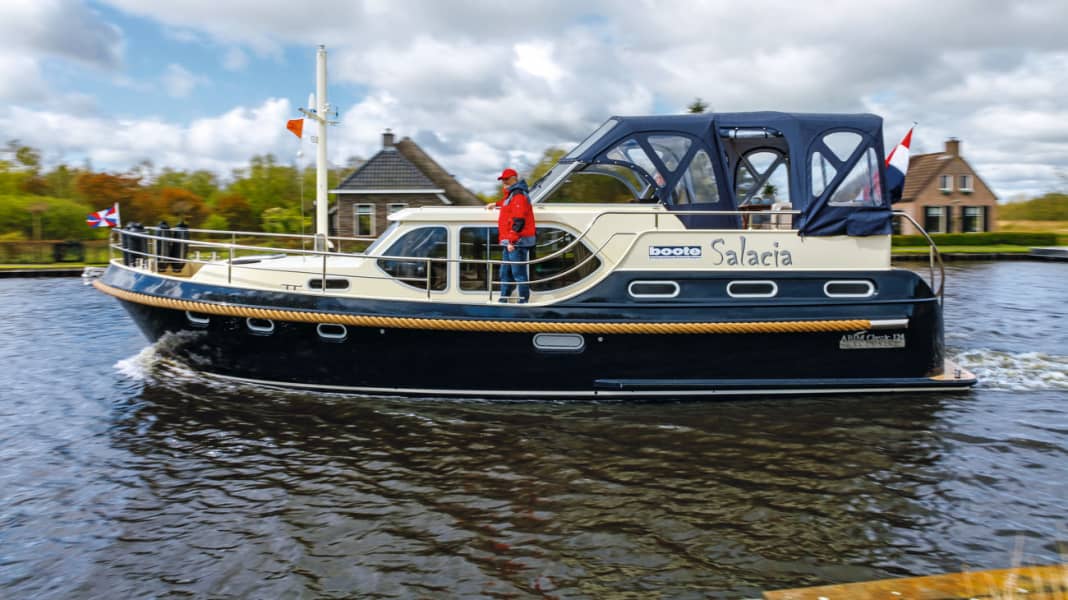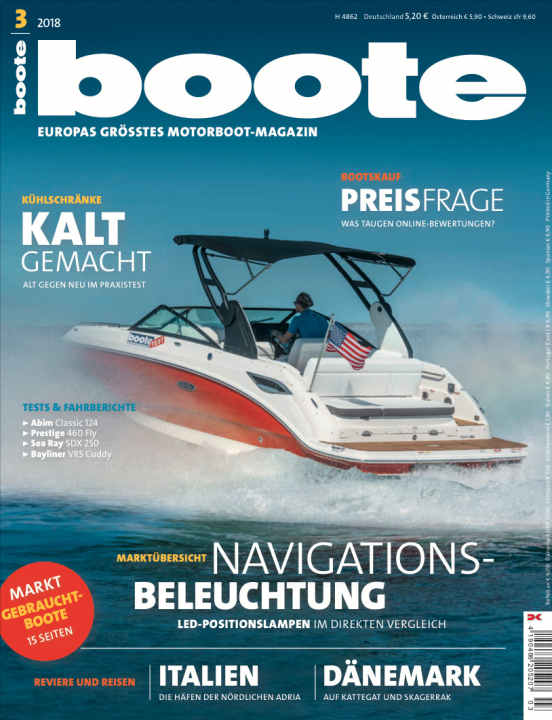
What could be better than travelling by boat? Nothing, of course! That's how the couple Dinie and Peter Oord, the founders of the ABIM shipyard, see it. To ensure that every journey is a pleasure andnot a stress factor In 2002, the two opened a driving school to teach their customers (newcomers as well as long-time boaters) how to handle a motor yacht properly.
The sailing lessons were also instructive for the Oord family, as the pupils naturally told them about their problems and wishes. What could be more natural than to use this knowledge to build boats themselves? This is how theABIM Classic seriesThese are steel displacement vessels between 11.40 and 15.40 metres in length. But it is not only her students and customers who contribute to her wealth of experience; the many trips with her own ABIM also provide new inspiration time and again.
Peter Oord says: "The most important thing is the control station on the aft deck, because travellers also want to see what is behind the dyke and what is happening. A few years ago, we travelled to Berlin via the Mittelland Canal, which was a very interesting trip, although many people find the Mittelland Canal boring."
Another point is the low clearance height: with folding windscreen frame and mast, the ABIM Classic boats are 2.45 metres. Our test area was theFairway around Ossenzijl. At a water depth of between around 1.50 and 2.20 metres, the test ABIM 124 with a draught of one metre does not have any grounding problems, but at top speed the shallow depth slows the boat down unintentionally.
The fact that full throttle makes little sense even at greater water depths due to the consumption of 21.3 l/h is in the nature of things. Thenormal travelling speeds are around 5.5 kn to 7.0 kn, resulting in ranges (with the 600-litre diesel tank) of 810 nm to just under 500 nm plus the obligatory 15% reserve. Values that are entirely appropriate for a cruising yacht.
On our test day, we had a wind force of around 4 to 5 Bft. With the high convertible top, it is not surprising that this affects course stability, especially in gusts. We therefore had to correct our course slightly from time to time. The important thing is to let the boat stabilise and only counter-steer a little. If you take a fast, tight turn, you will experienceNo unpleasant surprisesbecause the boat only leans a little on the outside of the bend and nothing slips off the table. Another plus: the steering is easy to operate and works precisely.
To be on the safe side when "parking", the shipyard installs bow and stern thrusters as standard on our Exclusive version.
These are operated from a control station on the aft deck. The steering wheel is installed a little too low for travelling standing up, but you have everything under control when seated. And Peter Oord has another practical tip for this: "We like to use an armchair as the driver's seat.freestanding rowing chairwhich is positioned at a 90-degree angle to the steering wheel. This means you can easily operate the rudder with one hand. The biggest advantage of this seating position is that you not only have a good view forwards, but also aft.
That's very important on canals with a lot of rush-hour traffic, because it means you won't suddenly be surprised by a big pot." And for good measureCommunication with the crew The seating position on the aft seating area also contributes to the good visibility. To ensure that visibility is always good, there are large foil windows in the convertible top and, for bad weather, a heating air outlet in the cockpit and three windscreen wipers on the split windscreen.
About a declineinto the lower deck areawhich has a saloon (equipped with sofa, dinette and galley), guest cabin (forward), owner's cabin (aft), shower cabin and toilet room. There is a hatch (with gas dampers) in the saloon floor to access the engine. Down there, clean installations as well as the tank and electrical system are impressive.
In terms of safety equipment, we are missing a manual bilge pump (two electric ones are standard), and the fire extinguishing system in the engine compartment costs extra, but ABIM provides two manual extinguishers as standard, which fulfils the BOOTE standard.Wide side decks provide security of movementThe boat has a solid railing with two entrances (push bars with safety catch) and a wide staircase leading to the bathing platform with a long ladder.
To protect the hull in the event of minor bumps, the shipyard installs a thick wieling. Our Exclusive version has ten bollards and four cleats for mooring. This version is also fully equipped and ready to go. However, it costs almost 70,000 euros more than the standard version.
CONCLUSION
The ABIM-Classic 124 is a successful steel displacement boat that allows two people to travel in comfort. You can easily take two guests with you in the bow cabin. Its low clearance height makes it particularly interesting for inland waterways, and the CE category B naturally also authorises it for sea areas.
This test appeared in Boote 03/2018


